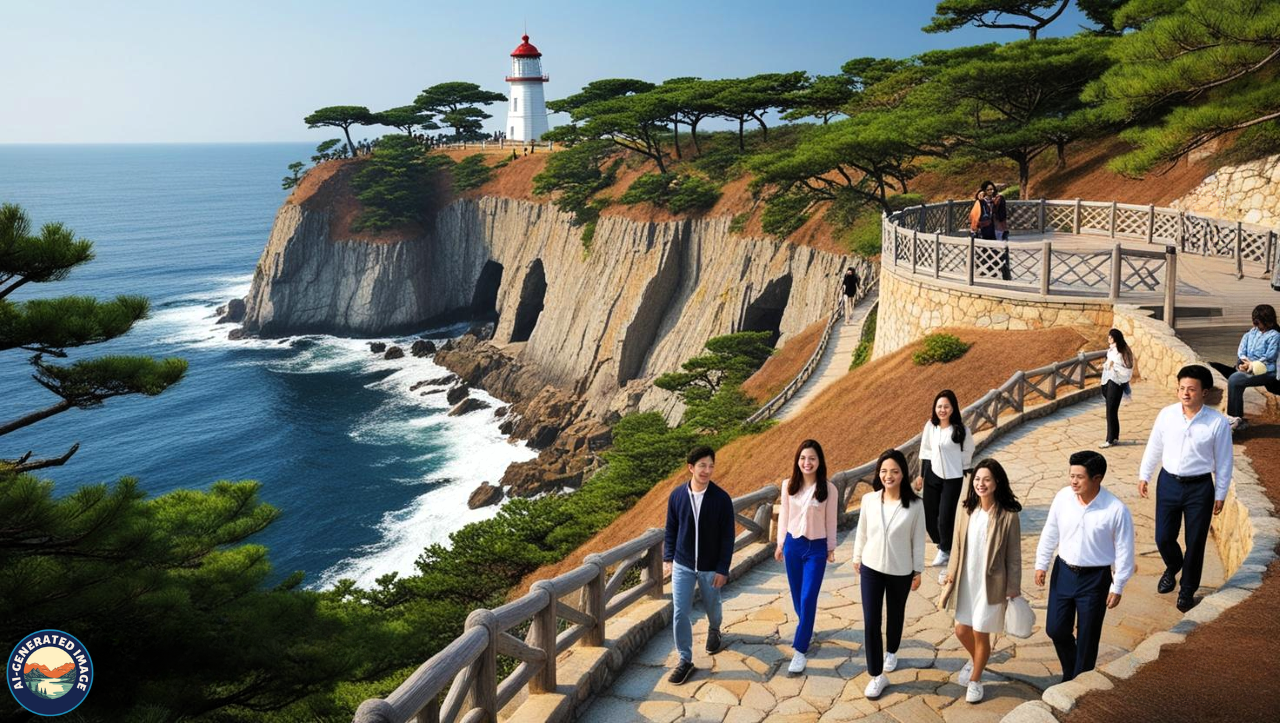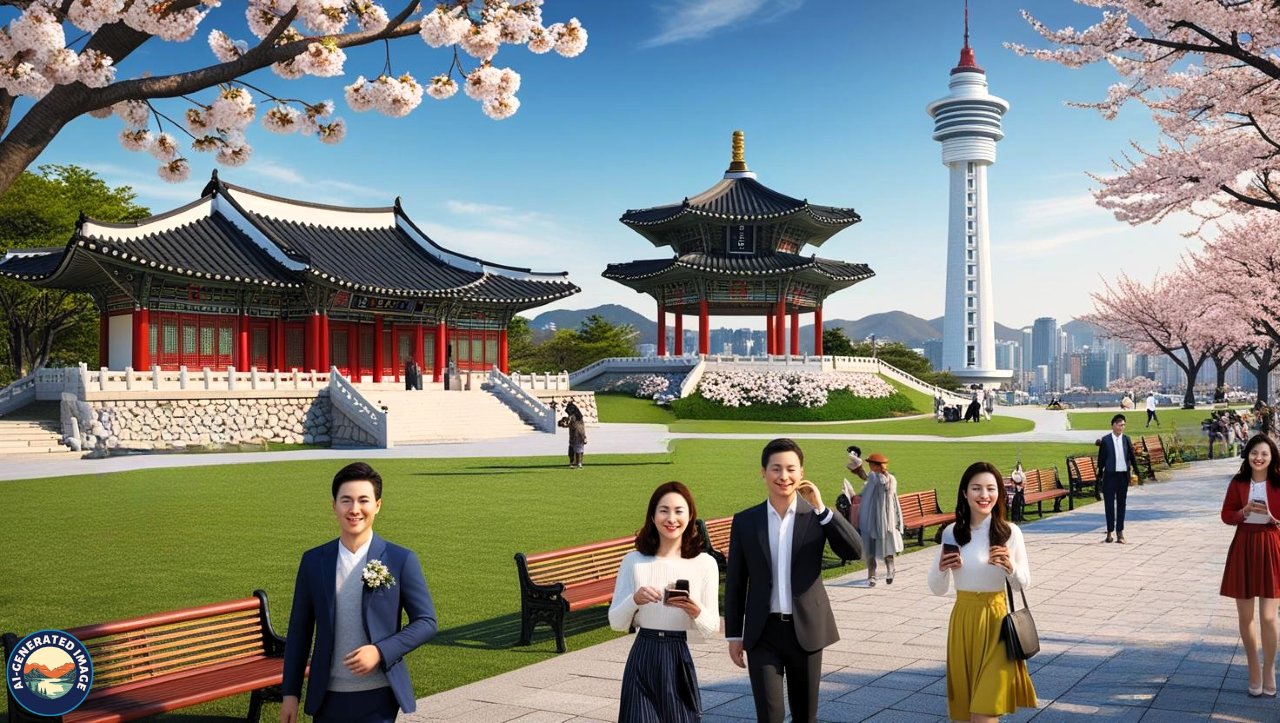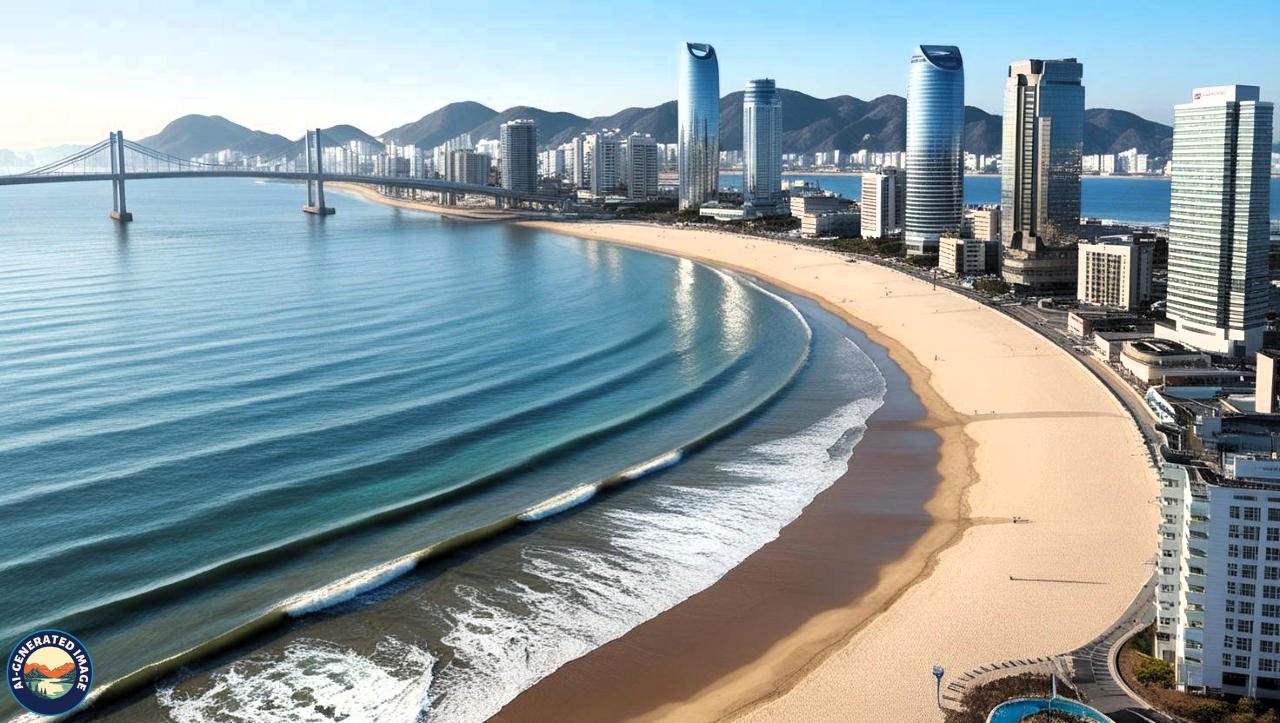Introduction
Nestled on South Korea’s southeastern coast, Busan is a vibrant and culturally rich city where golden beaches meet modern skyscrapers and bustling markets sit alongside tranquil temples. As South Korea’s second-largest city and a major maritime hub, Busan blends natural beauty, urban sophistication, and deep cultural heritage. Whether you’re drawn by its scenic coastlines, mountain trails, street food, or historic sites, this city offers an unforgettable travel experience. In this comprehensive guide, we’ll explore the best places to visit, what to eat, where to stay, and more in one of Asia’s most captivating coastal cities.
Why Busan Deserves a Spot on Your Itinerary
Busan’s appeal lies in its seamless blend of contrasts. Unlike the fast-paced energy of Seoul, Busan offers a more relaxed, ocean-kissed atmosphere while still remaining lively and exciting. Here’s why it stands out:
-
Nature and Urban Life:
-
From expansive beaches to mountainous temple trails, Busan offers something for both nature lovers and city explorers.
-
Cultural Richness:
-
Ancient temples, vibrant art villages, and lively festivals provide a taste of Korean culture, past and present.
-
Culinary Delights:
-
With the sea at its doorstep, Busan is famous for fresh seafood and unique local dishes.
-
Traveler-Friendly:
-
Safe, welcoming, and easy to navigate, Busan is ideal for solo travelers, families, and everyone in between.
Top Must-See Attractions
Haeundae Beach
Busan’s most famous beach, Haeundae, features a long, sandy shoreline perfect for swimming, sunbathing, and water sports. Nearby Dongbaek Island offers nature trails with scenic views and photo-worthy spots.

Gamcheon Culture Village
This hillside neighborhood, once a war refugee settlement, is now a colorful maze of murals, art installations, cafés, and boutique shops. A self-guided stamp tour through the village adds an interactive element to your visit.

Jagalchi Fish Market
South Korea’s largest seafood market is a paradise for seafood lovers. You can choose fresh seafood and have it cooked on the spot—whether it’s sashimi, grilled fish, or spicy seafood stews.
Beomeosa Temple
Set on the slopes of Mount Geumjeong, Beomeosa Temple is a tranquil escape from the city. With over a thousand years of history, the temple is known for its peaceful atmosphere, intricate architecture, and lush surroundings.

Gwangalli Beach & Gwangan Bridge
Known for its stunning nighttime views, Gwangalli Beach is the perfect place to relax with a drink and watch the Gwangan Bridge light up in a spectacular display.

Taejongdae Park
This scenic park is famous for its dramatic coastal cliffs, thick pine forests, and historic lighthouse. Visitors can hike the trails or take the Danubi Train for a leisurely tour of the area.

Yongdusan Park and Busan Tower
Located in downtown Busan, this park features cultural monuments, walking paths, and Busan Tower, which offers sweeping views of the city—especially beautiful during cherry blossom season.

Shinsegae Centum City
Recognized as the world’s largest department store, Shinsegae is more than just a shopping mall. It also features a luxury spa, indoor skating rink, cinema, and gourmet restaurants.
Things to Do
-
Coastal Hikes:
-
Walk the Igidae Coastal Trail for serene views of the sea and city skyline.
-
Cable Car Adventure:
-
Take the Songdo Marine Cable Car for panoramic views over cliffs and ocean.
-
Experience the Nightlife:
-
Head to Seomyeon, a bustling district full of bars, nightclubs, and street food.
-
Relax at a Korean Spa:
-
Visit a jjimjilbang like Spa Land to unwind the Korean way.
-
Indulge in Street Food:
-
Try local snacks like hotteok, tteokbokki, and more at BIFF Square.
What to Eat
Signature Dishes
-
Milmyeon:
-
Cold wheat noodles in a savory broth, ideal during warmer months.
-
Ssiat Hotteok:
-
A sweet, fried pancake stuffed with a mix of seeds and brown sugar.
-
Dwaeji Gukbap:
-
A comforting pork and rice soup, beloved by locals.
-
Grilled Eel:
-
Nutritious and flavorful, often served with dipping sauces.
-
Hoe (Raw Fish):
-
Served fresh with spicy gochujang, popular in coastal areas.
Best Places to Eat
-
Jagalchi Market:
-
The best place for freshly prepared seafood.
-
Gukje Market:
-
A bustling market with snacks, souvenirs, and international treats.
-
BIFF Square:
-
Perfect for sampling street food on the go.
-
Haeundae Market:
-
Great for local delicacies and quick meals.
Top Festivals
-
Busan International Film Festival (BIFF):
-
Held every October, it showcases films from around the world and attracts major talent.
-
Busan Fireworks Festival:
-
A breathtaking display of fireworks over Gwangalli Beach.
-
Sea Art Festival:
-
A unique event featuring outdoor art installations along the coastline.
-
Haeundae Sand Festival:
-
Massive sand sculptures transform the beach into an open-air gallery each spring.
These festivals bring the city to life and offer unforgettable experiences for visitors.
Best Places to Stay
Recommended Areas
-
Haeundae:
-
Ideal for beach lovers and first-time visitors.
-
Seomyeon:
-
The city’s entertainment and nightlife center.
-
Nampo-dong:
-
Rich in culture and close to major attractions.
Accommodation Options
-
Budget:
-
Try hostels like Kimchee Guesthouse or The Local Busan.
-
Mid-Range:
-
Consider Arban Hotel or Best Western Haeundae.
-
Luxury:
-
Indulge at Park Hyatt Busan or Lotte Hotel Busan.
Book early, especially during peak seasons and festivals.
Getting Around the City
-
Subway System:
-
Clean, safe, and efficient with English signage.
-
T-Money Card:
-
Makes travel on buses and subways quick and convenient.
-
Taxis:
-
Safe and reasonably priced. Apps like Kakao Taxi are useful.
-
Walking and Cycling:
-
Many parks and coastal paths are best explored on foot.
-
KTX Train:
-
High-speed trains connect Busan with Seoul in under three hours.
Day Trips from Busan
Gyeongju
Known as Korea’s “museum without walls,” Gyeongju is filled with ancient temples, royal tombs, and historic ruins.
Tongyeong
A scenic coastal town with cable cars, art museums, and delicious seafood.
Ulsan
Visit for its seaside beauty, modern industry, and the Whale Museum—a one-of-a-kind experience.
These destinations are easy to access and provide a deeper look into South Korea’s regional diversity.
Helpful Travel Tips
-
Best Time to Visit:
-
Spring (April–May) and autumn (September–November) offer mild weather and beautiful scenery.
-
Currency:
-
Credit cards are widely accepted, but cash is useful for small vendors.
-
Etiquette:
-
Respect local customs—bowing, removing shoes indoors, and polite speech are important.
-
Language:
-
English is limited in some areas; learning a few basic Korean phrases is helpful.
-
Wi-Fi:
-
Rent a pocket Wi-Fi device or purchase a local SIM card for reliable connectivity.
Conclusion
Whether you’re chasing the sound of waves, craving fresh seafood, or searching for a new cultural experience, Busan delivers. It’s a city that feels alive yet unhurried—a place where tradition meets innovation by the sea. With its scenic landscapes, flavorful cuisine, rich heritage, and welcoming locals, Busan leaves an impression that lingers long after you leave.
From temple trails to beach sunsets, street markets to luxury spas—Busan is South Korea’s coastal jewel, waiting to be discovered.
FAQs
Is Busan a good alternative to Seoul for travelers?
Yes. While Seoul is more fast-paced and metropolitan, Busan offers a more relaxed, coastal experience with equally rich culture.
How many days should I spend in Busan?
Three to five days is ideal to explore the major attractions and enjoy a day trip or two.
What’s the best way to get to Busan from Seoul?
The KTX high-speed train is the quickest option, taking approximately 2.5 hours.
Is Busan safe for solo travelers?
Absolutely. Busan is one of the safest cities in South Korea, and locals are generally helpful and friendly.
When is the best time to visit?
Spring (April–May) and autumn (September–November) offer the best weather and fewer crowds.

